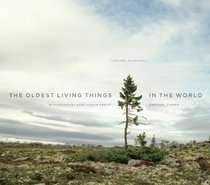Search -
The Oldest Living Things in the World
The Oldest Living Things in the World
Author:
The Oldest Living Things in the World is an epic journey through time and space. Over the past decade, artist Rachel Sussman has researched, worked with biologists, and traveled the world from Antarctica to the Mojave Desert in order to photograph continuously living organisms that are at least 2,000 years old. The result is a stunning and uniqu... more »
Author:
The Oldest Living Things in the World is an epic journey through time and space. Over the past decade, artist Rachel Sussman has researched, worked with biologists, and traveled the world from Antarctica to the Mojave Desert in order to photograph continuously living organisms that are at least 2,000 years old. The result is a stunning and uniqu... more »
ISBN-13: 9780226057507
ISBN-10: 022605750X
Publication Date: 4/1/2014
Pages: 170
Rating: 1
ISBN-10: 022605750X
Publication Date: 4/1/2014
Pages: 170
Rating: 1
5 stars, based on 1 rating
Publisher: University Of Chicago Press
Book Type: Hardcover
Members Wishing: 9
Reviews: Amazon | Write a Review
Book Type: Hardcover
Members Wishing: 9
Reviews: Amazon | Write a Review
Genres:
- Arts & Photography >> Individual Artists
- Arts & Photography >> Photography & Video >> Nature & Wildlife
- Science & Math >> Biological Sciences >> Biology >> Developmental Biology
- Science & Math >> Nature & Ecology




